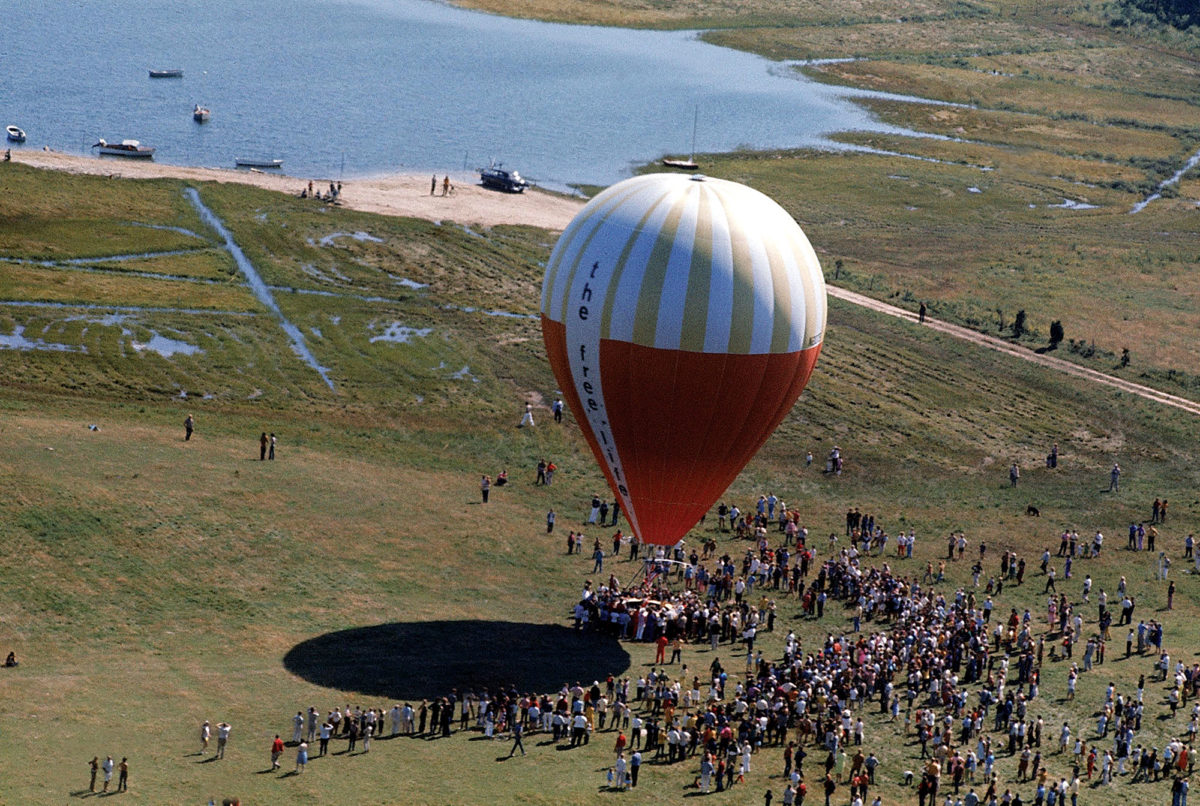Fifty years ago a British balloonist and a husband-and-wife team disappeared without a trace as they attempted to fly the Atlantic in a balloon dubbed The Free Life.
Crossing the Atlantic Ocean has proven an irresistible challenge to balloonists for more than 150 years. In the summer of 1970 Rodney Anderson, his wife Pamela Brown and British balloonist Malcolm Brighton were convinced they had the skills and the balloon necessary to become the first to complete the epic journey. But their efforts came up short when the likable trio underestimated or disregarded the risks involved. The three adventurers launched their balloon, The Free Life, from Long Island on a beautiful September day, sipping champagne to the cheers of friends and family, hoping to reach Europe in five days. They were never seen again.
The transatlantic crossing idea came to 32-year-old Rod Anderson in the mid-1960s. The New York commodities broker became intrigued by the notion that no one had flown a balloon across the Atlantic. Anderson had no ballooning experience, but he thought the endeavor would provide an opportunity to make a name for himself as a member of the prestigious Brown family of old Kentucky, into which he had recently married.
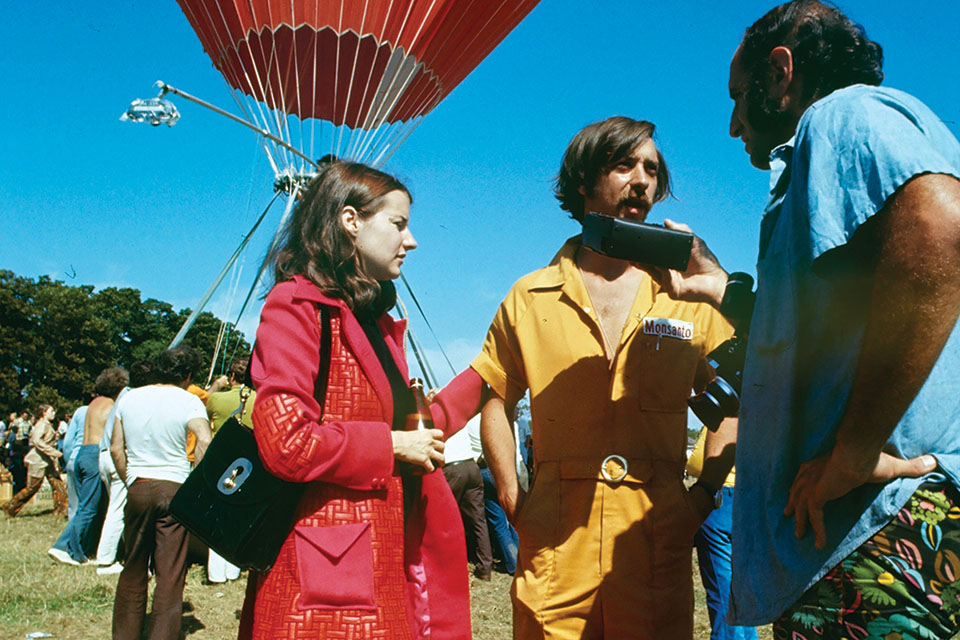
Anderson’s wife, Pamela, 28, was the daughter of a prominent Kentucky attorney and U.S. congressman. Her older brother, John Y. Brown Jr., would serve a term as Kentucky governor and earn millions developing the Kentucky Fried Chicken chain. At a young age she left behind the country club scene of Kentucky to pursue an acting career in New York City. She knew next to nothing about ballooning when Anderson suggested the Atlantic flight, but agreed the endeavor’s success would result in worldwide exposure and prestige and perhaps boost her career. Brown’s family was naturally reluctant at first and her mom was steadfastly against the risky project. But her wealthy father would soon come around, offering both his moral and financial support.
Anderson once said in an interview, “It doesn’t seem like it’s that complex” to fly across the Atlantic, “you just inflate this big balloon and off you go.” But the reality of transoceanic ballooning is far more challenging. In 1977, three days after launching their balloon Double Eagle from Massachusetts, pilots Maxie Anderson and Ben Abruzzo found themselves drifting off course, dodging icebergs near the coast of Iceland. The following year British pilots Don Cameron and Chris Davey were forced to ditch their balloon Zanussi just 110 miles short of the French coast, partly due to lack of wind.
It was never Anderson’s original intent for he or his wife to be onboard for the flight. He saw his role as that of a project manager and Brown’s as helping out with what was expected to be a flurry of media attention. The new balloon was built by Mike Semich of Coeur d’Alene, Idaho, and was an advanced hot-air/helium hybrid known as a Rozier, named for pioneer balloonist Jean-François Pilâtre de Rozier, who invented the concept in 1784.
Finding a qualified pilot for the venture proved to be challenging. Anderson was convinced the job should be comparable to that of a helmsman aboard a yacht. A balloon “commander” would give orders and the pilot would simply “steer” the vessel through the air. Naturally, qualified balloonists saw this arrangement quite differently, so disagreements were inevitable. An overland test flight of the new balloon in 1969 ended in disappointment when equipment failure forced pilot Jim Contos to make a premature landing. The damaged balloon required costly repairs and modifications, $6,000 worth of helium was gone and Contos quit the effort.
Anderson’s frustration over the test flight could have provided the motivation for him to take a more active role in the expedition by assuming the role of balloon commander. Three years of work had only produced a modest 40-mile flight and expenses were piling up. Anderson and Brown felt pressured to get their project off the ground. The couple referred to The Free Life as their “monster in the backyard,” requiring constant attention and feeding. The Atlantic ballooning season of 1970 was fast approaching, but without a pilot the project was desperately in need of a hero to step in and save the day.
British balloonist Malcolm Brighton was aware of the proposed American transatlantic project and had considered such an adventure himself, but the costs were beyond his means. Brighton was well-known in the European ballooning community, highly regarded as a safe and responsible pilot. The call from Rod Anderson left the 32-year-old father of two both flattered and intrigued. A successful Atlantic flight would set him apart as the world’s premier balloonist and secure him a place in the history books.
Brighton’s enthusiasm increased upon meeting Anderson and Brown in New York that summer. The trio’s personalities simply “clicked.” Brighton even approved of Brown joining in the flight, a detail they would keep secret up until launch time, since her mother clearly forbade it. The couple were captivated by Brighton’s air of confidence and deep well of aeronautical knowledge. Brown said the handsome Englishman was “an absolute gem. He’s rescuing this project.” In this turnkey operation, the balloon pilot saw the opportunity for fame, glory and fortune. That is, until he saw The Free Life.
“I think I could have done better,” Brighton told the press after he inspected Anderson and Brown’s “monster in the backyard.” His expert observations quickly revealed the balloon’s many shortcomings. The helium capacity of 73,000 cubic feet was smaller than he preferred to carry enough supplies for a five-day journey. The crude propane burner was beset with leaks and misfires. The gondola’s seaworthiness was questionable, since its shallow saucer shape could be swamped in high waves.
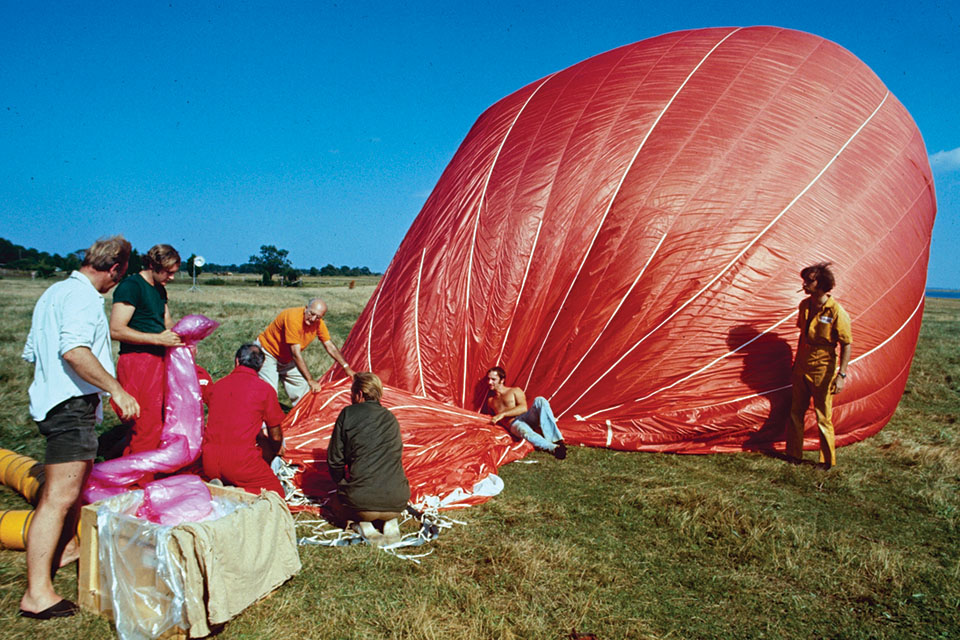
Above all else there was the lack of any method to quickly detach the balloon from the gondola in the event of an open-sea ditching. Anderson had deemed this option too costly since the project was already way over budget. The solution was for the crew to cut the 10 load straps simultaneously upon hitting the water, releasing the envelope and leaving the three occupants to ride the waves in the floating gondola until rescued. In perfect conditions this would demand careful coordination at a most critical time. With rough seas and a fresh breeze, slicing all 10 straps at once would prove all the more challenging. Just one or two straps remaining intact could tip the gondola, dumping the passengers and contents into the water.
Time was growing short to address these issues, as the autumn storm season was fast approaching. But putting off the flight until 1971 was out of the question for the weary couple. “We’ve already cancelled for two years,” Brown said. “We have to go. There is no alternative.” Brighton relented in his critique and agreed to return to Long Island in September to take his place on the team.
The weather was perfect for launch day, Sunday, September 20, 1970. More than 1,500 people gathered in George Miller’s pasture on Long Island near a village called Springs to watch the preparation of the red, white and yellow balloon. The inflation process took most of the night, and Anderson, Brown and Brighton had gotten little sleep. But by midday the three heroes were center stage, sharing their moment of glory with friends and family. Anderson looked authoritative in his yellow jumpsuit. Brighton radiated confidence with his charming British accent and tousled blond hair, completing the look of an aristocratic explorer with a pipe clenched in his teeth. Brown flashed a movie-star smile, capturing the highlights of the day with her handheld Super 8 camera.
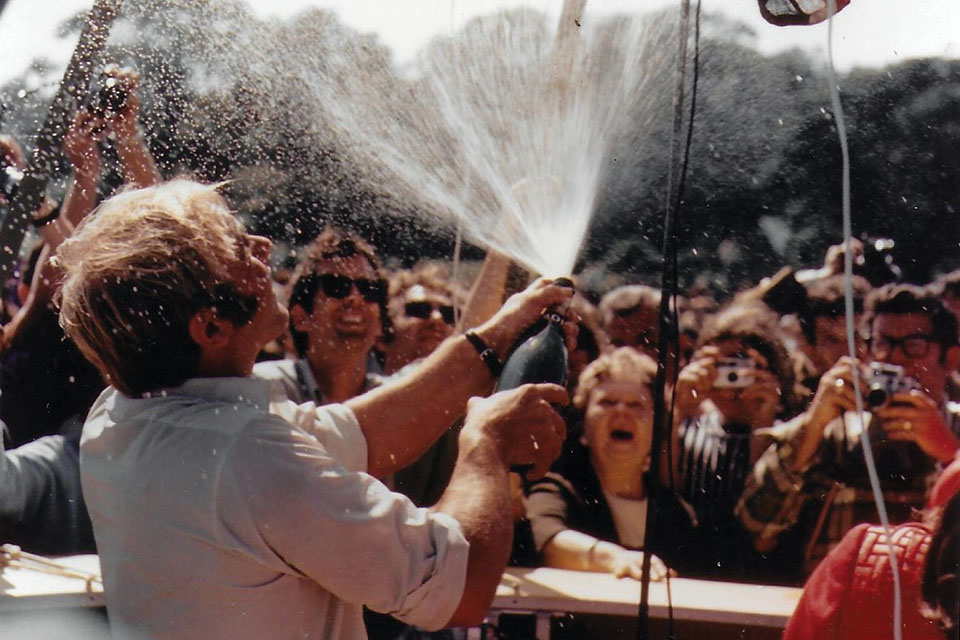
Supplies were loaded aboard the gondola, radios were checked and the flags of the United States and Great Britain were hung side by side in the rigging of the eight-story balloon. Brown’s father was there, standing out from the crowd in his brown alpaca suit. Her mother was at a spa in South America, where she had learned only the night before that her daughter was planning to be onboard when The Free Life departed. She frantically phoned family members in an attempt to prevent the launch, to no avail.
As they lifted off to the cheers of the adoring crowd, the trio passed around a bottle of champagne while waving goodbyes. It was the perfect exclamation point to a fabulous day filled with hope and promise for a successful crossing to Europe. This was Brighton’s 100th balloon flight but the first for Anderson and Brown.
Launching a balloon from a crowded venue is a study in contrasts. One moment you’re surrounded by humanity, with hundreds of people gathered around the gondola, shooting photos, asking questions, craning to have a look inside. Then all at once you’re enveloped by silence as you slowly drift away. This was the first moment of peace the adventurers had experienced in many hours. As Miller’s farm receded into the distance and the Atlantic loomed before them, the trio must have been thinking about how their journey might end. Where would they land? Ireland? France? Spain? No doubt Brighton was hoping for England, to be near home and family.
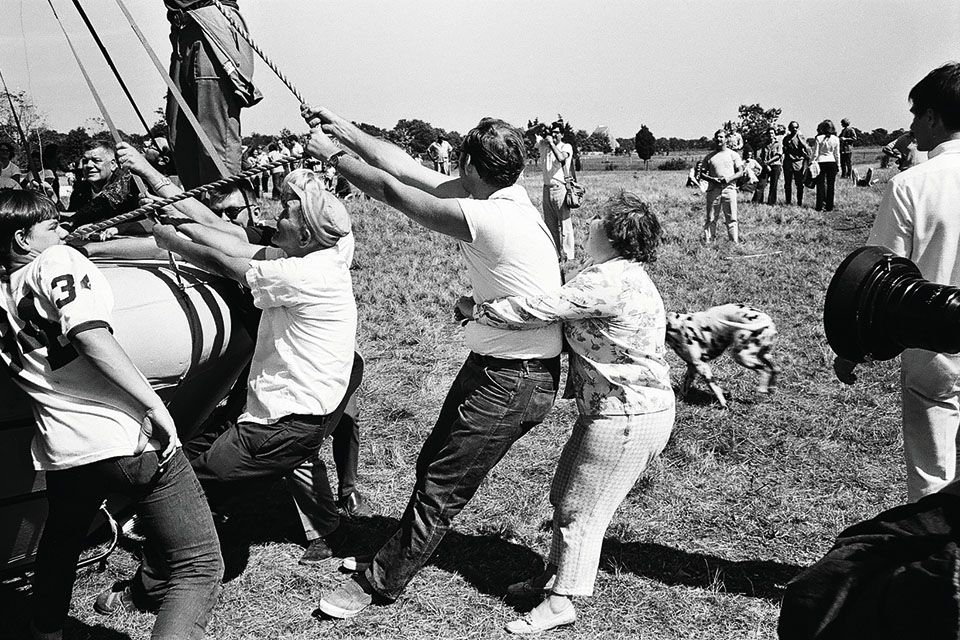
Radio transmissions provide a few insights into the progress of the flight, which quickly went awry. The troublesome burner continued to malfunction and was soon declared inoperative. Without the burner to warm the balloon’s helium, precious ballast had to be jettisoned throughout the night to keep the overweight balloon in the air. In the light of Monday morning, after taking stock of the remaining ballast and the miles achieved thus far, Brighton must have come to the inevitable conclusion that reaching Europe was impossible. The underbuilt Free Life simply lacked the range to stay aloft for the next four days.
One can only imagine the discussions that ensued among the trio, when Brighton laid down these brutal facts. The prudent action would have been to summon search and rescue at once and ditch into the sea early in the day, providing searchers with enough daylight hours to locate and pick up the crew. But to give up so early in the flight must have been an appalling notion to Anderson and Brown. They had spent so much time and money to get to this point—shouldn’t they continue until the last ounce of ballast? They surely would have appealed to Brighton to keep going.
But there was yet another partner with a stake in this decision, albeit a silent one up to now: Mother Nature. And she was about to turn hostile.
A westbound airplane radioed a warning of deteriorating weather ahead. The warming sunshine had given way to clouds, cooling the balloon’s helium and denying the crew the benefit of “free lift” enjoyed by gas balloonists on sunny days. A meteorologist confirmed the bad news that the balloon was approaching a cold front. The forecast called for a westerly surface wind of 20 knots and wave heights up to six feet. A cold rain may have started about this time, obscuring visibility and compounding the problem of lost lift, as a rain-soaked balloon can accumulate unwanted pounds very quickly. But despite the threatening conditions, the trio chose to delay ditching until nearly sunset. Brighton’s final dramatic radio transmission to Gander, Newfoundland, indicated they were going into the sea and requested search and rescue. They had been in the air only 30 hours.
Anthony Smith, balloonist, adventurer and author of the book The Free Life: The Spirit of Courage, Folly and Obsession, later said in an interview, “They really hadn’t worked out the business of what to do when coming down in the water.” If things went perfectly, as the gondola touched the sea, Anderson, Brighton and Brown would have simultaneously cut those 10 straps. The unburdened envelope would then quickly climb into the sky, leaving the gondola and its occupants afloat on the waves. Brighton would have reported a successful touchdown to Gander along with an approximate position, engaged the emergency locator beacon and the trio would have ridden out the storm while they awaited rescue.
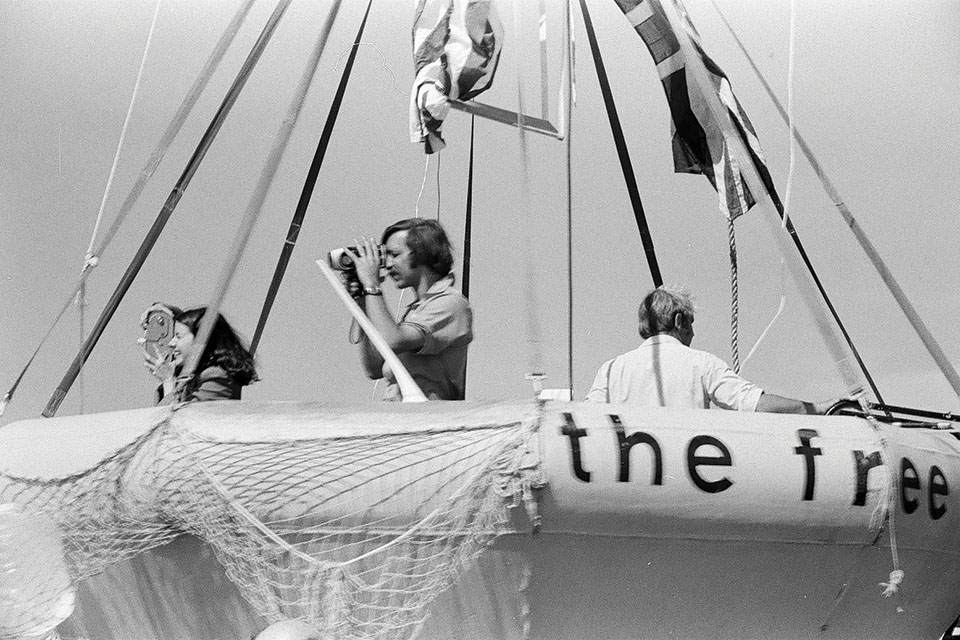
But evidently the landing did not go perfectly. No further transmissions were reported and no signal was picked up from the emergency beacon. Search planes from the U.S. and Canadian coast guards were on the scene at first light Tuesday morning and began an extensive search of the ocean around The Free Life’s last reported position, 500 miles east-southeast of St. John’s, Newfoundland. The gondola was equipped with flares, medical supplies, a large amount of food and a four-person rubber raft, giving hope that the crew would be rescued.
After three days of searching, the coast guards proposed calling off the effort since nothing had been found. Brown’s father called in favors around Washington, and the search was extended for a couple more days. A total of 370 search hours were flown and sightings of a few objects were investigated. In all cases the items turned out to be remnants of fishing gear or other debris unrelated to The Free Life.
Once the coast guards retreated, Brown’s father secured the services of a civilian DC-6 with a crew of eight to continue scouring the area. The aircraft flew 68 hours of search patterns, with observers stationed at every window, including some family and friends. But the effort yielded no results.
Out of desperation the family brought in a Dutch clairvoyant who, after handling some personal effects belonging to Brown, Anderson and Brighton, declared that two of the three were still alive, eight days after ditching. He said the survivors could be found several hundred miles from the original search grid. Yet another plane searched this area, but no traces of the balloon or crew were ever found.
Perhaps the most enduring legacy of The Free Life tragedy was the immediate effect it had on the world’s ballooning community, and what would become known as the “race for the Atlantic.” The deaths of three intelligent and capable people clearly increased the stakes, creating a new sense of drama and urgency. This endowed further attempts with a newfound sense of virtue, as if each new flight was in honor of the trailblazers who had given their lives to show the way. Within three years the next attempt on the Atlantic was made, followed by nine more flights before the decade was out. Two balloonists were killed in separate attempts in 1974, one disappearing without a trace.
Three Americans finally completed the crossing in 1978, landing their helium balloon Double Eagle II in France 137 hours after departing from Presque Isle, Maine. Pilots Ben Abruzzo, Maxie Anderson and Larry Newman were mobbed by hundreds of well-wishers as they made a perfect landing 50 miles west of Paris. Corks popped, cameras clicked and the three men were instantly proclaimed heroes of the air. After a gourmet dinner at Maxim’s in Paris, the trio flipped a coin to decide who would sleep in the “Lindbergh Bed” at the American Embassy (the original bed Charles Lindbergh slept in on his first night in Paris, May 21, 1927).
Photos and footage of Double Eagle II were spread across the world’s newspapers and televisions. The balloon appeared on the covers of Newsweek, National Geographic and Sports Illustrated. A tickertape parade welcomed the trio home to Albuquerque, N.M. President Jimmy Carter saluted the balloonists from the White House and Congress struck a special gold medal to honor them. Double Eagle II’s gondola was displayed in the National Air and Space Museum, near Lindbergh’s Spirit of St. Louis.
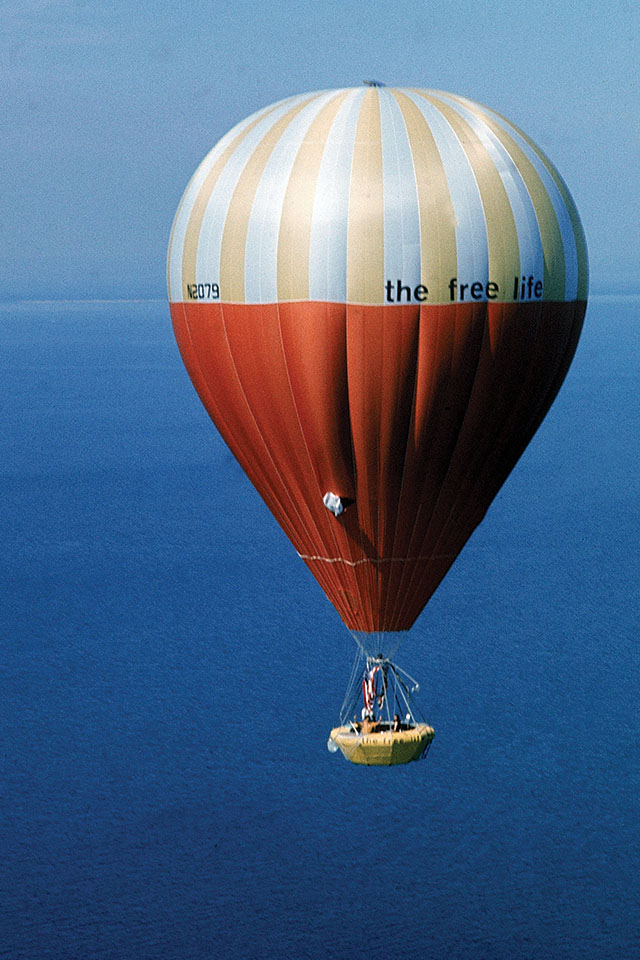
The Atlantic has been crossed by balloon 17 times in the 50 years since The Free Life attempt. The Rozier design of hot air and helium has since been perfected and is now the standard for long-distance ballooning. Record-breaking balloonist Troy Bradley, who has flown across the Atlantic and Pacific, said of The Free Life effort, “Although they failed to produce the desired result of crossing the Atlantic, the system they chose was the right one for the job. Since 1992, when Richard Abruzzo and I set the absolute duration record in a Rozier balloon, the hybrid system has proven itself time and again as the best system for ultra-long-distance flights.” By 1999 the Rozier technology was further advanced when Breitling Orbiter 3 made the first balloon flight around the world, a feat that has been repeated twice, each time in a Rozier balloon.
In retrospect the flight of The Free Life raises an important question: Just what could entice three smart and successful people to climb aboard a balloon of questionable design, throw caution to the wind and fly off into the unknown, on a quest with only the narrowest odds for success? Individually, any one of them might have considered the risks unacceptable and ultimately decided to stay on the ground. But with their combined ambitions bound together, Rod Anderson, Pamela Brown and Malcolm Brighton inspired one another to the point that not one of them had the heart to step up and say “no.” A mere hint of discouragement could seem like a betrayal of their collective dream. It was the perfect storm of sound reasoning offset by bad judgment and reckless emotion.
Genie Chipps Henderson, Brown’s closest friend since childhood, had helped with planning and preparations for the flight and was present at the launch. In the weeks following the tragedy, she penned lines to Brighton’s widow that served as a fitting epitaph for the trio: “My only thoughts now are that all three, for their own individual reasons, were doing something they dearly loved and believed in—the day they left I can’t describe how beautiful it was. It was a moment when the whole world seemed perfect—for them and for the rest of us, too. That brief perfection was a heavy price, I know.”
Indiana-based author Jerry Copas has been a balloonist for 40 years and is the historian for the Balloon Society of Kentucky. Further reading: The Free Life: The Spirit of Courage, Folly and Obsession, by Anthony Smith; and Hands Off! Epic Adventures of the Balloon Flyers of Akron, by William G. Armstrong Jr. and Michael C. Emich.
This feature originally appeared in the July 2021 issue of Aviation History. Don’t miss an issue, subscribe!

